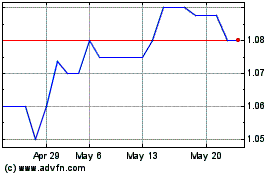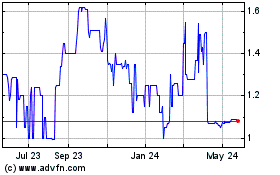UNITED STATES
SECURITIES AND EXCHANGE COMMISSION
Washington, D.C. 20549
FORM SD
Specialized
Disclosure Report
Inrad Optics, Inc.
(Exact name of the registrant as specified
in its charter)
| New Jersey |
0-11668 |
22-2003247 |
(State or other jurisdiction of
incorporation or organization) |
(Commission
File Number) |
(IRS Employer
Identification No.) |
| 181 Legrand Avenue, Northvale, NJ |
07647 |
| (Address of principal executive offices) |
(Zip code) |
| William J. Foote |
|
[Phone] 201-767-1910 |
(Name and telephone number, including area code, of the
person to contact in connection with this report.) |
Check the appropriate box to indicate the rule pursuant
to which this form is being filed, and provide the period to which the information in this form applies:
| x | Rule 13p-1 under the Securities Exchange Act (17 CFR 240.13p-1) for
the reporting period from January 1 to December 31, 2014. |
Section 1 – Conflict Minerals Disclosure
Item 1.01 Conflict Minerals Disclosure and Report
Introduction
Inrad Optics, Inc. and its subsidiaries (the “Company”
or “Inrad Optics”), headquartered in Northvale, New Jersey, was incorporated in New Jersey in 1973. The Company develops,
manufactures and markets products and services for use in photonics industry sectors via three distinct but complimentary product
areas - "Crystals and Devices," "Custom Optics" and "Metal Optics." The Company is a vertically integrated
manufacturer specializing in crystal-based optical components and devices, custom optical components from both glass and metal,
and precision optical and opto-mechanical assemblies. Manufacturing capabilities include solution and high temperature crystal
growth, extensive optical fabrication capabilities, including precision diamond turning and the ability to handle large substrates,
optical coatings and provide in-process metrology.
Inrad Optics is committed to conflict free sourcing and complying
with applicable laws affecting the Company’s industry. As such, the Company has worked to implement due diligence procedures
in connection with the conflict minerals requirements of Section 1502 of the Dodd-Frank Wall Street Reform and Consumer Protection
Act. The Company’s Conflict Minerals Statement is publically available on its Internet website at: http://www.inradoptics.com/facility-capabilities/quality-systems/quality-certifications
Reasonable Country of Origin Inquiry.
As conflict minerals (as defined in Item 1.01(d)(3) of Form
SD, “Conflict Minerals”) are necessary to the functionality or production of a product manufactured by Inrad Optics,
the Company has conducted in good faith a reasonable country of origin inquiry (“RCOI”) for calendar year 2014 to determine
whether any of the Conflict Minerals originated in the Democratic Republic of the Congo or an adjoining country (as defined in
Item 1.01(d)(1) of Form SD, an “Adjoining Country”), or from recycled or scrap sources (as defined in Item 1.01(d)(6)
of Form SD, “Recycled/Scrap Sources”).
Conflict Minerals Disclosure
Inrad Optics is concurrently filing the required Conflict Minerals
Report, which is publically available on the Company’s Internet website at: http://www.inradoptics.com
Item 1.02 Exhibit
Inrad Optics, as an exhibit to this Form SD, is filing the Conflict
Minerals Report required by Item 1.01 of Form SD.
Section 2 – Exhibits
Item 2.01 Exhibits
Exhibit 1.01 – Conflict Minerals Report as required by
Items 1.01 and 1.02 of Form SD
SIGNATURES
Pursuant to the requirements of the Securities Exchange
Act of 1934, as amended, the registrant has duly caused this report to be signed on its behalf by the duly authorized undersigned.
| Inrad Optics, Inc |
|
|
| (Registrant) |
|
|
|
|
|
| /s/ W.J. Foote |
|
June 1, 2015 |
| By William J. Foote, CFO, Secretary and Treasurer |
|
Date |
* * * * *
Exhibit 1.01
Inrad Optics, Inc.
Conflict Minerals Report
for the Reporting Period from January
1, 2014 to December 31, 2014
Inrad Optics, Inc. and its subsidiaries (the “Company”
or “Inrad Optics”), headquartered in Northvale, New Jersey, was incorporated in New Jersey in 1973. The Company develops,
manufactures and markets products and services for use in photonics industry sectors via three distinct but complimentary product
areas - "Crystals and Devices," "Custom Optics" and "Metal Optics." The Company is a vertically
integrated manufacturer specializing in crystal-based optical components and devices, custom optical components from both glass
and metal, and precision optical and opto-mechanical assemblies. Manufacturing capabilities include solution and high temperature
crystal growth, extensive optical fabrication capabilities, including precision diamond turning and the ability to handle large
substrates, optical coatings and provide in-process metrology.
Inrad Optics is committed to conflict free sourcing and complying
with applicable laws affecting the Company’s industry. As such, the Company has worked to implement due diligence procedures
in connection with the conflict minerals requirements of Section 1502 of the Dodd-Frank Wall Street Reform and Consumer Protection
Act. The Company’s Conflict Minerals Statement is publically available on its Internet website at: http://www.inradoptics.com/facility-capabilities/quality-systems/quality-certifications
| (2) | Reasonable Country of Origin Inquiry |
As conflict minerals (as defined in Item 1.01(d)(3) of Form
SD, “Conflict Minerals”) are necessary to the functionality or production of a product manufactured by Inrad Optics,
the Company has conducted in good faith a reasonable country of origin inquiry (“RCOI”) for calendar year 2014 to
determine whether any of the Conflict Minerals originated in the Democratic Republic of the Congo or an adjoining country (as
defined in Item 1.01(d)(1) of Form SD, an “Adjoining Country”), or from recycled or scrap sources (as defined in Item
1.01(d)(6) of Form SD, “Recycled/Scrap Sources”).
"Inrad Optics,” "we," "our"
and "us" are used interchangeably to refer to Inrad Optics, Inc. and its subsidiaries. The following is a description
of the measures we took to exercise due diligence on the source and chain of custody of conflict minerals (as defined in Item
1.01(d)(3) of Form SD, “Conflict Minerals”) contained in our products manufactured during the 2014 calendar year.
As a first step, we determined that Conflict Minerals
are contained in certain products manufactured by us, and that the Conflict Minerals are necessary to the functionality or production
of certain products. Inrad Optics then conducted a supply chain survey of its applicable direct suppliers using the Electronic
Industry Citizenship Coalition, Incorporated & Global e-Sustainability Initiative (“EICC/GeSI”) Conflict Minerals
reporting template. We surveyed 15 direct suppliers identified as providing components that potentially contain Conflict Minerals
during the 2014 calendar year and received responses from 13 or approximately 87%. These responses were summarized and evaluated
and follow-up calls were made where additional clarification was required.
In furtherance of our supplier survey efforts, Inrad
optics has worked to integrate into its supply chain management programs the Organization for Economic Co-operation and Development
(“OECD”) five-step framework for risk-based due diligence for responsible supply chains of minerals from conflict-affected
and high-risk areas. Our due diligence framework and compliance efforts are described below.
| 1. | Establish Strong Management Systems |
In accordance with our due diligence framework and
compliance efforts:
| · | We
have communicated to applicable suppliers our compliance efforts with Section 1502 of
the Dodd-Frank Wall Street Reform and Consumer Protection Act, pursuant to a compliance
statement and other communications. We requested that our applicable suppliers provide
a comprehensive Conflict Minerals declaration for all Conflict Minerals in the form of,
or comparable to, the EICC/GeSI template. |
| · | We
plan to communicate our compliance efforts to all new suppliers and provide annual compliance
communications and RCOIs to applicable suppliers. |
| · | We
have worked towards implementing internal compliance efforts, including internal reporting
requirements, to support our supply chain due diligence process. |
| · | We
are working towards implementing a process with new suppliers to screen their applicable
components and identify where conflict minerals may exist. |
| · | We
are currently designing and establishing a system of controls and supply chain transparency
by employing due diligence tools created by EICC/GeSI, including supply chain surveys.
As a downstream manufacturer, we rely on our suppliers to provide the origins of all
Conflict Minerals, including smelter and mine locations, and transit routes. Based on
our reasonable country of origin inquiry conducted in accordance with the EICC/GeSI
template (“RCOI”), we could not determine smelter and mine locations, and
transit routes, for all of our manufactured or contracted to manufacture products. |
| · | We
plan to implement a risk mitigation response plan to address business relationships with
suppliers that are DRC conflict undeterminable (as defined in Item 1.01(d)(5) of Form
SD), which mitigation may include identifying an alternate supply. Our program will include
adequate monitoring to adjust our strategies as sourcing data improves and new information
is received. |
| 2. | Identify and Assess Risks in Our Supply Chain |
We identified risks at the product level by determining
first whether the products contained Conflict Minerals necessary to the functionality or production of products that we manufacture.
We then identified the applicable supplier(s) relating
to those products. As we progress, we expect that transparency in our supply chain will increase and that will allow for better
risk assessment at more detailed levels of our supply chain. We intend to continue our communications with our suppliers regarding
Conflict Minerals in order to endeavor to mitigate risks that the necessary Conflict Minerals identified in the products we manufacture
could benefit armed groups in the Democratic Republic of the Congo or an adjoining country (as defined in Item 1.01(d)(1) of Form
SD).
Based on assessed risks, our RCOI covered applicable
suppliers.
| 3. | Design and Implement a Strategy to Respond to Identified
Risks |
We believe that our RCOI was reasonably
designed and executed to determine the existence and source of Conflict Minerals in our supply chain, including recycled or
scrap materials (as defined in Item 1.01(d)(6) of Form SD). We utilized the EICC/GeSI template for our RCOI, but also
comparable forms of documentation accepted in the industry. We conducted our effort to send surveys in good faith and
communicated directly with our suppliers throughout the process. We evaluated survey responses to identify: (i) the use and
source of Conflict Minerals; and (ii) any warning signs indicating that Conflict Minerals may have come from the Democratic
Republic of the Congo or an adjoining country. We made additional inquiries on a case-by-case basis to clarify or obtain more
information as necessary. We tracked results of our supply chain diligence process and reported the results to our executive
leadership team.
We do not have sufficient information, based on the
survey responses received, to determine each of the specific facilities used to process Conflict Minerals or to identify specific
countries of origin for the Conflict Minerals used in all of our products.
| 4. | Implement Targeted Independent Third-Party Due Diligence |
We are in support of industry initiatives which encourage
smelters and have targeted suppliers and/or facilities to participate in comparable due diligence validation activities.
| 5. | Report on Supply Chain Due Diligence |
We have developed a company policy and will continue
to communicate with our suppliers. Management’s conflict minerals compliance and due diligence efforts will be reported
on an annual basis and will be available on the company website at http://www.inradoptics.com. Further, we have responded
to customer requests for information regarding our Conflict Minerals determination when requested and will continue to do so.
Conclusion
Based on a “reasonable country of origin inquiry”
(RCOI), we are unable to determine if the necessary conflict minerals originated in the Democratic Republic of the Congo or an
adjoining country (collectively, referred to as the “Covered Countries”) and financed or benefited armed groups in
those countries or if those necessary conflict minerals were from recycled or scrap sources.
This report was not subjected to an independent private
sector audit as allowed under Rule 13p-1.
Inrad Optics (PK) (USOTC:INRD)
Historical Stock Chart
From Jun 2024 to Jul 2024

Inrad Optics (PK) (USOTC:INRD)
Historical Stock Chart
From Jul 2023 to Jul 2024
